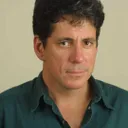Stay in the Loop
BSR publishes on a weekly schedule, with an email newsletter every Wednesday and Thursday morning. There’s no paywall, and subscribing is always free.
Philly's not-so-proud pioneers
True Crime Philadelphia: From America's First Bank Robbery to the Real-Life Killers Who Inspired Boardwalk Empire by Kathryn Canavan

Like many other cities, Philadelphia has seen its share of crime. Unlike many other cities, it has seen the sort of epic, world-historical crime that appears in popular retrospectives, including journalist Kathryn Canavan’s latest book, True Crime Philadelphia: From America's First Bank Robbery to the Real-Life Killers Who Inspired Boardwalk Empire. In it, she explores a chilling selection of the felonies that have beset the City of Brotherly Love almost since its founding.
Riots and assassinations
Take the Bible Riots. In 1844, Catholics and Protestants faced each other for 11 weeks of street fighting that resulted in the burning of several Catholic churches and their surrounding buildings. At least 14 men died, more than 50 sustained injuries, hundreds lost their homes to arson, and thousands of religious books went into bonfires. At one point, opposing forces aimed cannons at each other on the streets of Southwark.
The fighting started most immediately because Protestant churches believed the Catholics wanted to rid the public schools of the King James Bible. But it’s hard not to see the reflection of a seething nativism fearing the immigration of Catholics, mostly Irish, who would take the Pope’s guidance in voting.
Or take the assassination of Octavius V. Catto. On Election Day, October 10, 1871, Catto, a 32-year-old activist and school principal, was gunned down by a white assassin on South Street just after 3:30pm. He had voted that day, and ran a pioneering Black school in the city. The killer, who was chased down by bystanders but nevertheless escaped, remained at large for five years.
A darker list of firsts
Certainly, the sins of the city have found worthy expression in Canavan’s hands. But rarely has the city’s list of firsts included so many of its darker deeds. Where crime is concerned, Philadelphia can stand among the nation’s pioneers.
The first bank robbery took place here.
The first kidnapping for ransom took place here.
A man hatched the largest mass murder plot in US history here.
This is to say nothing of the cases in which Philadelphia played a supporting, though still crucial, role.
H. H. Holmes, suspected of many murders in Chicago, finally found justice in Philadelphia when he was hanged at Moyamensing Prison in 1896.
Facts and ordinary folks
Canavan’s eye for detail is no less evident here than in her first book, Lincoln’s Final Hours, a close account of the assassination night. We get the shape of the nose of Charlie Ross’s kidnapper in 1874. We get the height of the fence wrapped around the Pine Street Mansion where Mary Hill was murdered in 1868. We get the number of minutes it took Anton Probst to hack up seven members of the Deering family in 1866, all of it buoyed by abundant footnotes.
A former crime reporter and Delaware native, Canavan has found time amid a wide-ranging freelance career to win a National Health Journalism Fellowship at the University of Southern California’s Annenberg School of Communications and Journalism.
Her just-the-facts reportorial style works equally well with crime of current or previous centuries. For all the mayhem she reports, it’s law-abiding Philadelphians who seem to triumph in her stories.
“This book raises a glass to the clever, heroic, and quietly confident everyday Philadelphians who have tripped up criminals for more than 300 years,” the author says in her foreword. “Curious pipefitters. Nosy neighbors. Dogged detectives. Bold patrolmen. Heroic homemakers. Fearless mechanics. Take-charge delivery boys. And, always, sharp-eyed passersby.”
Those who chased down the killer of Catto are a good example. Another is the pair of cops who watched thunderstruck as men, escapees, emerged from a hole at 22nd Street and Fairmount Avenue next to Eastern State Penitentiary in 1945. One of the men was Willie Sutton, who enjoyed exactly three minutes of freedom before being caught, and who went on to score a successful prison break from Holmesburg Prison two years later.
Lurid? Yes. Shadowy? Of course. A demimonde of Damon Runyon delinquents? One could call it that. It’s also the stuff of folk legend, and a notorious note in the history of the city. The patina of age has lessened the outrage; Canavan has done an artisan’s job with stories from beyond the line. All of it makes fascinating reading.
What, When, Where
True Crime Philadelphia: From America’s First Bank Robbery to the Real-Life Killers Who Inspired Boardwalk Empire. By Kathryn Canavan. Guilford, Connecticut: Lyons Press, November 2021. 264 pages, hardback; $28.95. Get it here.
Sign up for our newsletter
All of the week's new articles, all in one place. Sign up for the free weekly BSR newsletters, and don't miss a conversation.

 Rob Laymon
Rob Laymon